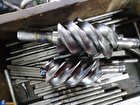Iranian Researchers Locally Produce Nanocomposites, Nanoparticles in Low Temperature Cell Preservation Process

“Cooling the Cellular and Tissue Samples to Very Low Temperatures,” is the title of research project conducted in the Royan Institute’s Department of Embryology during which nanocomposites and nanoparticles were obtained.
“This research project was conducted with the aim of finding solutions to prevent damage to sperm, egg (embroys) and cellular samples in the freezing process, which ultimately led to the production and localization of nanocomposites and nanoparticles,” said Rohollah Fathi, an associate professor at the Royan Institute.
“In the freezing process, living cells and tissues are stored in nitrogen at a temperature of −96°C,” the researcher said.
As regards the application of freezing tissues and living cells, Fathi said that storing human embryo, egg and sperm samples for a long time helps to treat infertility.
“In the processes of storage and freezing of cellular and sexual samples in the lab, cells and samples undergo a lot of pressure and tension for fertilization, which is very harmful for their fertilization,” he added, adding that the purpose of this research project is to find ways to reduce this damage in samples.
“One of the ways to preserve cell samples is to use antifreeze while it comes with problems. “Antifreeze materials have positive and negative effects and act exactly like a double-edged sword,” the researcher noted.
Meanwhile, the researcher said that using nanoparticles and nanoparticles are very useful to remove the harmful effects of antifreeze materials.
“Nanoparticles not only increase the freezing speed, they are placed on the water molecules of cellular tissues and ultimately prevent the formation of ice crystals inside the cellular tissues.”
Fathi pointed to a new method of producing nanoparticles specific to the freezing process, saying, “The green synthesis method is a new method in which plant extracts are used instead of chemicals.”
“Nanoparticles are placed inside disaccharides or 12-carbon sugar, and xylitol coating (a kind of protective coating) is placed on them. Disaccharides can also act as antifreeze,” he continued to explain.
“When nanocomposites and nanoparticles are used in the embryo and egg freezing process, the probability of cell survival and embryo growth in the cells increases highly,” Fathi said.
“When nanocomposites enter the freezing process of cellular tissues, they prevent cell death considerably and also increase the probability of fertility in eggs and sperm,” the researcher said.
“The findings of this research and of course nanoparticles and nanocomposites could be useful for all infertility treatment centers, hospitals, laboratories and cell banks in the country,” he concluded.
4155/i





















